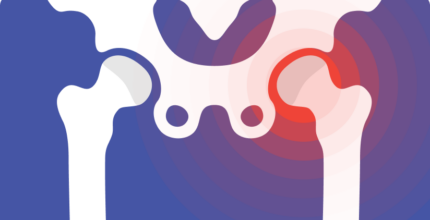
This means that the hip ball becomes soft (like a melting ice-cream).
After some months the blood supply returns, and the hip gets hard again. Problems can occur when the hip ball hardens, because it stays whatever shape it became when it was squashy.
This can lead to a hip ball that doesn’t fit well into the hip socket, which can cause pain and stop the child doing their usual activities.
The best time to treat the hip in Perthes’ disease is when the hip is squashy, which is the stage that your child is currently in. Once the hip becomes hard, the treatment options change.

In the UK, about half of the surgeons treat children affected by Perthes’ disease with ‘active containment’.
Active containment is a package of care that involves physiotherapy, activity restriction, education and pain relief.
The specific physiotherapy aims to maintain movement of the hip and keep the soft ball moving within the socket, allowing it to continually smooth its shape – i.e. the ‘ice cream rolling within the scoop’.

The other half of surgeons treat children affected by Perthes’ disease with ‘surgical containment.’ Surgical containment involves an operation to break the bone to re-orientate the hip.
Surgery involves reorientating either the thigh bone (femur) or the hip bone (pelvis). This means that the ‘ice-cream ball’ changes position in the ‘ice cream scoop’, to make the hip squash into the round shape of the socket.










